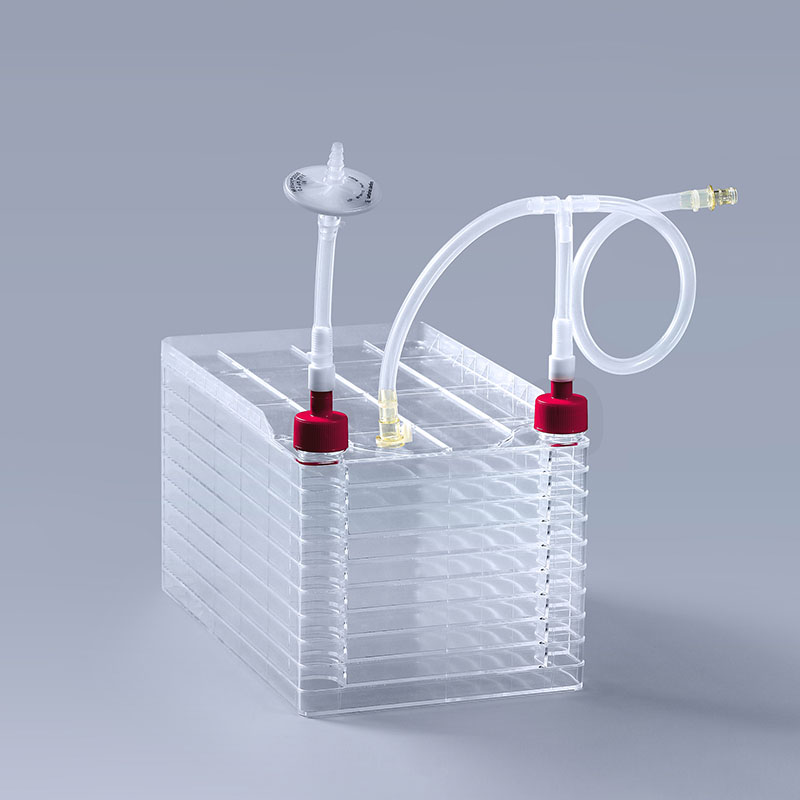In the fields of biopharmaceuticals and vaccine preparation, cell factories have become essential tools. These multi-layered cell culture vessels offer advantages such as small footprint and high cell yield, enabling large-scale cell cultivation. However, cell growth and reproduction are highly sensitive to the environment, necessitating strict adherence to operational guidelines and precautions.
Firstly, all operations must comply with aseptic techniques. The cell culture environment within the cell factory requires high levels of sterility; any contamination could lead to failed or abnormal cell growth. Therefore, thorough disinfection and cleaning must precede any operation to ensure the sterility of the working environment.

Secondly, operations should be performed gently to avoid generating bubbles. Bubbles can cause uneven distribution of culture medium, leading to cell clumping or uneven growth. This not only affects normal cell growth and reproduction but also impacts the quality of the final bioproduct.
Furthermore, care should be taken to prevent alcohol or disinfectants from spraying onto the breathable lid. Alcohol or disinfectants can wet the hydrophobic membrane, hindering gas exchange or disrupting pressure balance during operations. This could severely impact the cell growth environment within the cell factory, necessitating special attention when using disinfectants or alcohol.
In summary, operating a cell factory is meticulous and requires precision. Only by mastering the correct operating procedures can smooth cell cultivation be ensured, thereby providing robust support for biopharmaceuticals and vaccine preparation. Let us work together to make greater contributions to public health protection.
The FAI climbed 5.9 percent year-on-year in the first 11 months of 2018, quickening from the 5.7-percent growth in Jan-Oct, the National Bureau of Statistics (NBS) said Friday in an online statement.
The key indicator of investment, dubbed a major growth driver, hit the bottom in August and has since started to rebound steadily.
In the face of emerging economic challenges home and abroad, China has stepped up efforts to stabilize investment, in particular rolling out measures to motivate private investors and channel funds into infrastructure.
Friday's data showed private investment, accounting for more than 60 percent of the total FAI, expanded by a brisk 8.7 percent.
NBS spokesperson Mao Shengyong said funds into weak economic links registered rapid increases as investment in environmental protection and agriculture jumped 42 percent and 12.5 percent respectively, much faster than the average.
In breakdown, investment in high-tech and equipment manufacturing remained vigorous with 16.1-percent and 11.6-percent increases respectively in the first 11 months. Infrastructure investment gained 3.7 percent, staying flat. Investment in property development rose 9.7 percent, also unchanged.
 English
English


















































